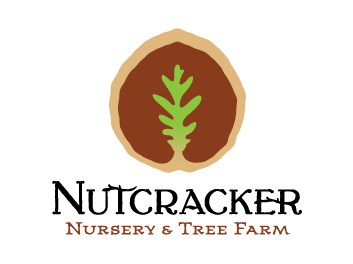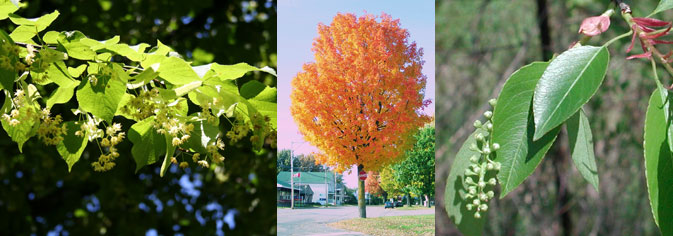











Indigenous trees | New England
Did you know that indigenous trees play a vital role in regenerating wooded areas and stabilizing sloped terrain? To enrich your landscape with these powerful trees, call us at Nutcracker Nursery & Tree Farm.
The Value of Indigenous Trees
Now more than ever, we need to plant trees to produce more oxygen and improve our air quality. Indigenous trees make for a particularly powerful choice when it comes to enriching our soil and encouraging water retention.
With indigenous trees, you’ll be able to enhance your wooded areas, protect your plant life from wind and strengthen and stabilize your sloping landscape. At Nutcracker Nursery & Tree Farm, you’ll find a compelling range of indigenous species that happily grow in New England, Quebec and Western Canada. We’ll help you make the best choice for your terrain. Call us today!
“Promoting indigenous tree planting throughout Canada”
Our Indigenous Tree Selection
In addition to indigenous oaks, Nutcracker Nursery & Tree Farm carries a wonderful variety of trees that will yield immense benefits for the planet. Check out these classic and popular possibilities…
- American Basswood, tillia americana
- American Beech (fagus grandifolia)
- American cranberrybush viburnum, (viburnum trilobum)
- American Elm, (ulmus americana)
- Arrowwood viburnum (viburnum dentatum)
- Bitternut Hickory, Carya cordiformis
- Black Cherry, prunus serotina
- Black Spruce (Picea mariana)
- Common Ninebark (physocarpus opulifolius), and much more
Do you want to enhance the beauty and condition of your landscape? Opt for indigenous trees! Call us!
“Enrich your soil and air quality with indigenous trees”
25 to 50 = 5%
51 to 75 = 10%
76 to 150 = 15%
151 to 350 = 20%
351 and more = 25%
Discount from 30% to 40% for large quantities... request a quote by email
Culture Best grown in moist, acidic, well-drained soils in full sun. As the common name suggests, this is a tree of cool mountain climates that dislikes hot and humid summers, and will not grow well south . Noteworthy Characteristics Native to Europe and Asia, European mountain ash has been widely planted in... more
Culture Best grown in moist, acidic, well-drained soils in full sun. As the common name suggests, this is... more
Acer sieboldianum (Siebold's Maple is a specie of maple native to Japan and common in the forests of Hokkaidō, Honshū, Shikoku and Kyūshū Islands; in the south of the range it is restricted to mountain forests. It is a slow-growing, small to medium-sized deciduous tree growing to 10–15 metres... more
Acer sieboldianum (Siebold's Maple is a specie of maple native to Japan and common in the forests... more
Not available
Tilia americana is a specie of Tilia native to eastern North America. Tilia americana is a medium-sized to large deciduous tree reaching a height of 18 to 37 m (60 to 120 ft) exceptionally 39 m (129 ft) with a trunk diameter of 1-1.5 m (3–4 ft) at maturity. The crown is domed, the branches spreading,... more
Tilia americana is a specie of Tilia native to eastern North America. Tilia americana is a... more
Fagus grandifolia (American beech or North American beech) is the species of beech tree native to the eastern United States and Canada from Nova Scotia west to southern Ontario in southeastern Canada, west to Wisconsin and south to eastern Texas and northern Florida in the United States. F. grandifolia is believed to... more
Fagus grandifolia (American beech or North American beech) is the species of beech tree native to the... more
Not available
Viburnum trilobum ( American cranberrybush viburnum) , American cranberrybush is a specie of Viburnum native to northern North America, from Newfoundland west to British Columbia, south to Washington state and east to northern Virginia. It is very closely related to the European and Asian Viburnum opulus, and... more
Viburnum trilobum ( American cranberrybush viburnum) , American cranberrybush is a specie of Viburnum... more
The American hophornbeam, is a species of Ostrya native to eastern North America, from Nova Scotia west to southern Manitoba and eastern Wyoming, southeast to northern Florida and southwest to eastern Texas. Populations from Mexico and Central America are also regarded as the same species, although some authors... more
The American hophornbeam, is a species of Ostrya native to eastern North America, from Nova Scotia west to... more
Not available
Carpinus caroliniana (American hornbeam) is a small hardwood tree in the genus Carpinus. It is a small tree reaching heights of 10–15 m, rarely 20 m, and often has a fluted and crooked trunk. The bark is smooth and greenish-grey, becoming shallowly fissured in all old trees. The leaves are alternate,... more
Carpinus caroliniana (American hornbeam) is a small hardwood tree in the genus Carpinus. It is a small... more
































































